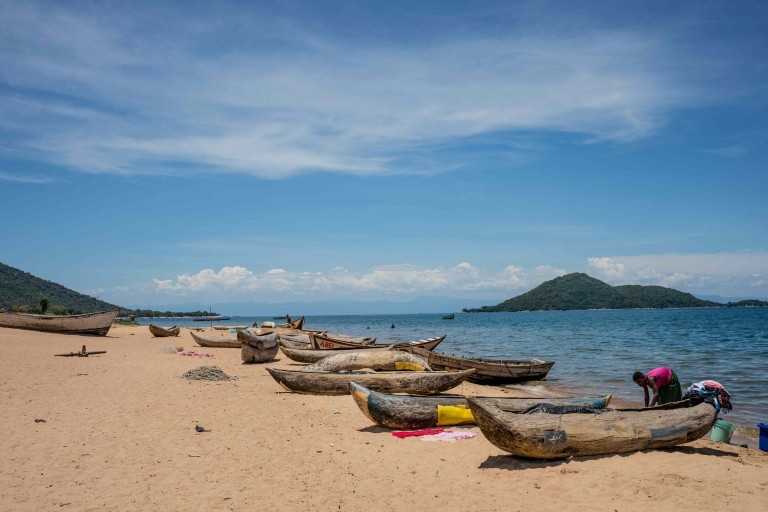Blog
Climate and health signals from COP28: Community priorities, integrated approaches and proactive action

A landmark climate and health declaration
Last December’s 28th UN Framework Convention on Climate Change (COP28) hosted a health day that resulted in the COP28 UAE Declaration on Climate and Health. Signed by more than 140 countries, including the United States and China, this non-binding call to action highlights community concerns about health impacts of climate change. It opens the door for further productive engagement on these important linkages with ministries of health in UN climate talks.
Annual COP declarations shape the climate action agenda, guiding government priorities and providing a framework for local community members, activists, researchers and policymakers to organize, convene, make commitments and take action. While the health and climate change link was recognized by the Intergovernmental Panel on Climate Change (IPCC) in 1990, last December marks the first time that governments convened on health and climate change at a climate COP.
The declaration urges commitment to climate-resilient development, robust health systems, and resilient and thriving communities. Governments pledged more than $1 billion for climate and health projects, emphasizing both mitigation and adaptation action to meet health goals. Notably, building off “the right to health” recognized in the 2015 Paris climate agreement, this declaration stands out in several aspects.
First, the declaration captured community impacts. The health impacts of climate are mostly felt at the local community level. The IPCC estimates that 3.3 billion people worldwide are highly vulnerable to climate change and face greater health risks as a result. Beyond key COP28 topics like the global stocktake and a review of Nationally Determined Contributions (NDCs: countries’ self-defined national climate pledges under the Paris agreement), methane agreements and loss and damage commitments, the health day spotlighted the community health impacts of climate change. These profound impacts range from physical ailments, including sickness caused by extreme weather events and vector-borne diseases, to mental health issues like anxiety, depression and post-traumatic stress. Addressing the health impacts of climate change requires a comprehensive approach, including mitigation efforts to reduce greenhouse gas emissions and adaptation strategies to strengthen healthcare systems and safeguard vulnerable populations. The COP28 declaration calls for action to build climate-resilient communities by centering on the direct experiences of those communities facing climate change impacts.
Second, the declaration calls for an integrated approach to climate solutions. This declaration signals the importance of addressing climate change holistically. It advocates for approaches like the U.S. Centers for Disease Control and Prevention’s One Health, which incorporates the health of humans, animals and ecosystems. The declaration also highlights the co-benefits of mitigation and adaptation actions in sectors such as transportation, water, urban planning and sanitation. This integrated approach is increasingly reflected in national climate plans, with 91% of NDCs now incorporating health considerations. These considerations are being explored from various climate change perspectives—mitigation, adaptation and loss and damage—together with calls for collaboration across these domains.
Third, the declaration strongly advocates for equity and emphasizes the importance of considering differentiated impacts on vulnerable populations. It calls for proactively engaging in early action and warning systems, avoiding maladaptation or the deepening of health risks and focusing on equity. While acknowledging the need to address emissions from the health sector itself, it provides limited attention to the impacts of current and anticipated fossil fuel use. The recognition of the differential health impacts on vulnerable populations is a crucial aspect of the declaration.
What’s next? Funding and tracking progress
Need to address funding gaps. Despite the positive framing of the declaration, there is still a long way to go to address funding gaps. The World Health Organization’s (WHO) 2023 review of health in NDCs and long-term strategies noted that overall less than 0.5% of climate financing is allocated to health projects. While the commitment of more than $1 billion for mitigation, adaption and other projects related to climate and health is laudable, it falls far short of what is needed. Additionally, only 1 in 10 NDCs include domestic funding for some or all of their health actions, indicating a substantial gap in funding.
Organizations such as the Green Climate Fund; the Rockefeller Foundation; The Global Fund to Fight AIDS, Tuberculosis, and Malaria; and the WHO collaborated with the COP28 Presidency and others to produce Guiding Principles for Financing Climate and Health Solutions in the lead up to COP28. The guiding principles recognize that, “Climate change is one of the greatest health challenges of our time. Despite the critical need for action, fragmented, hard to access and insufficient finance is a major barrier to implementing climate and health solutions and achieving climate and health goals.” It will be important to continue to drive opportunities for blended finance while advancing an inclusive and equitable approach to financing climate and health solutions.
An important approach to development. This declaration reflects an important approach to development for organizations like Pact: addressing community concerns, a holistic approach to development and fostering collaboration among various stakeholders and technical experts. We are enthusiastically looking forward to next steps from the declaration. Progress will be overseen by the WHO-hosted Alliance for Transformative Action on Climate and Health with a focus on low carbon and climate-resilient health systems. At a minimum, it’s a positive step that health ministries can engage in negotiations on climate-resilient development and explore how health system infrastructure links to climate impacts and subsequent community health effects. Ensuring financing commitments match the ambitions set forth in the declaration is also paramount.